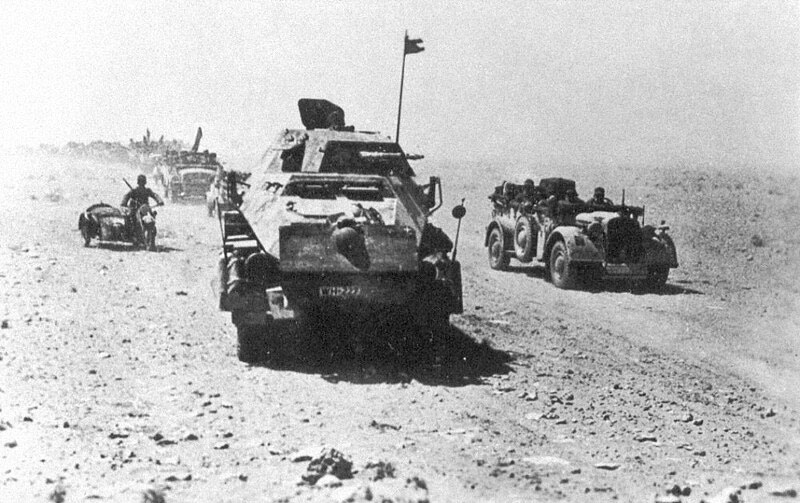Bir Hakeim
Many visitors to Paris have already walked over the “Pont de Bir-Hakeim” or used the Metro station of the same name not far from the Eiffel Tower. What is it about this place that hardly anyone outside France knows?
Bir-Hakeim was a fort in the Libyan desert and the site of a battle in the North African theater of war in 1942, where the so-called Afrika Korps under General Rommel and his Italian allies faced off against Great Britain since 1941. Rommel aimed to conquer Egypt and the Suez Canal, which were vital for British interests. Also fighting on the British side was a small force of soldiers from “Free France”, under the authority of the government-in-exile that Charles de Gaulle had founded shortly after the armistice in 1940. The soldiers of this exile army sought to prove that France was not just made up of collaborators, but was making an active contribution to the defeat of Germany.
This opportunity presented itself in the summer of 1942 in Bir-Hakeim. The troops of “Free France” had the task of holding the fort as long as possible to give the British time to strengthen their own lines of defense. They unexpectedly held the fort for several days against Italian and German attacks, catapulting “Free France” into the spotlight. When the fort finally had to be evacuated against an overwhelming German superiority, the Free French soldiers once again behaved outstandingly: a large proportion of them were able to reach the British lines unharmed.
For “Free France”, the Battle of Bir-Hakeim was a highly welcome opportunity to enhance its own contribution to the war. De Gaulle’s chief propagandist Maurice Schumann reinterpreted the small and by no means decisive battle as a “new Verdun”, thus building a bridge to the battle of the First World War, which was as costly in human lives as it was identity-forming. Schumann even described the defense of Bir-Hakeim as a victory, despite the fort’s fall.
The battle also had a great resonance within France, where the opponents of collaboration and occupation were eagerly awaiting news of the war that would give them hope that Germany would soon be defeated. Bir-Hakeim was one such message that strengthened the people in the resistance in placing their trust in de Gaulle and his movement. The impact of this battle is evidenced by the fact that an underground resistance newspaper was published under the title “Bir-Hakeim” from January 1943 onwards. And a “maquis” based in the Charente also chose the name of the North African fort. Bir-Hakeim thus became a symbol that embodied France’s unbowed will to resist and linked the external with the internal resistance.
Matthias Waechter





